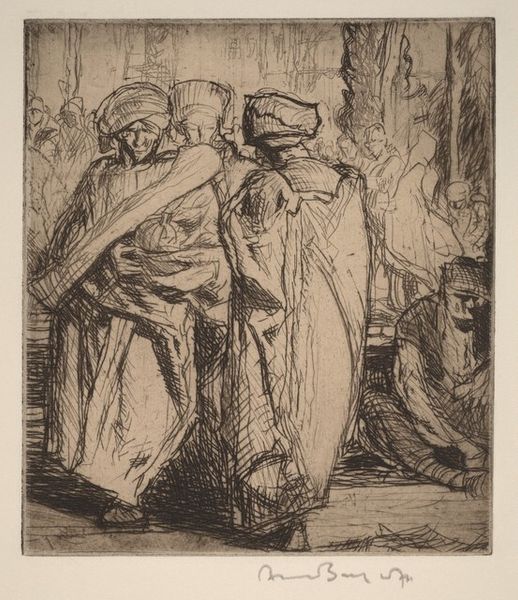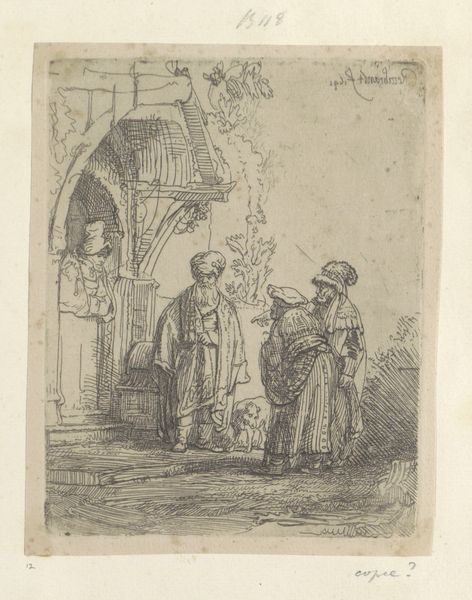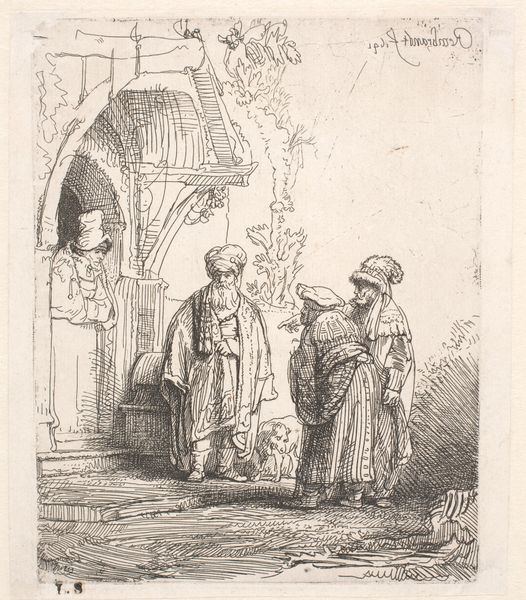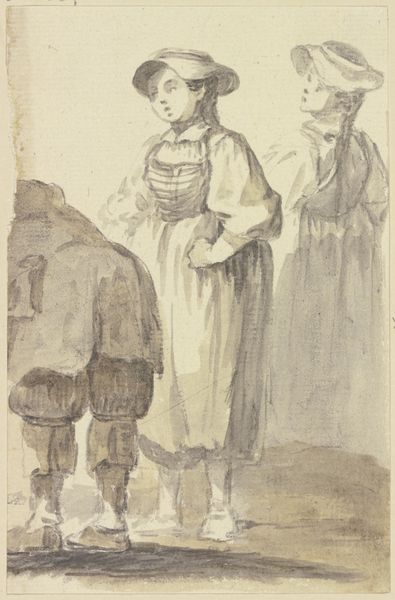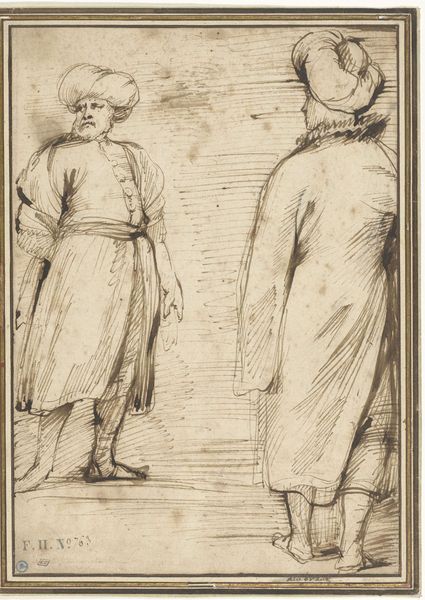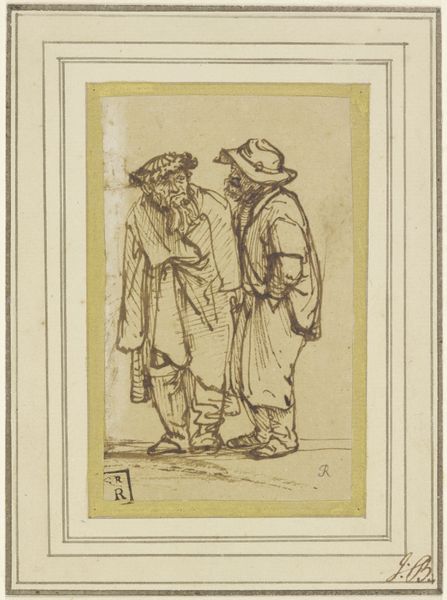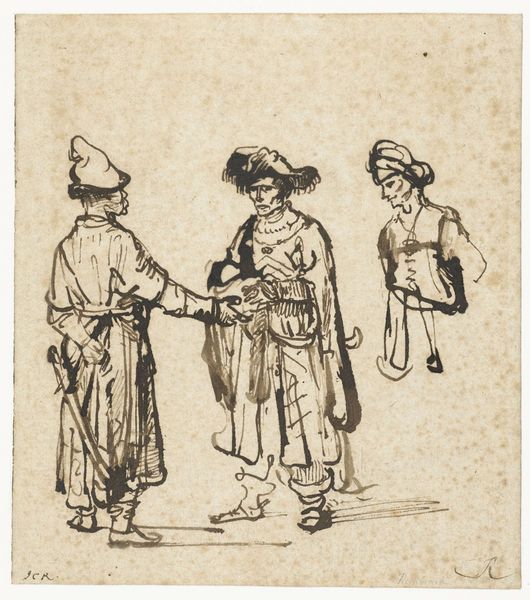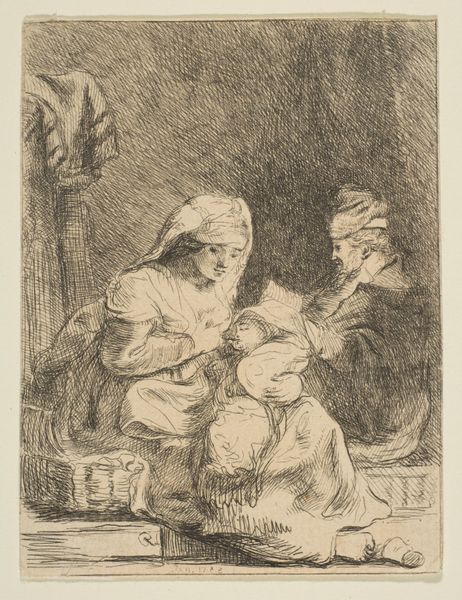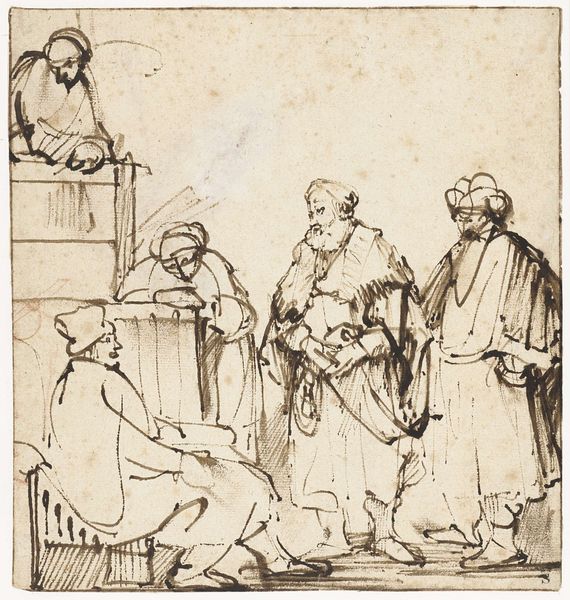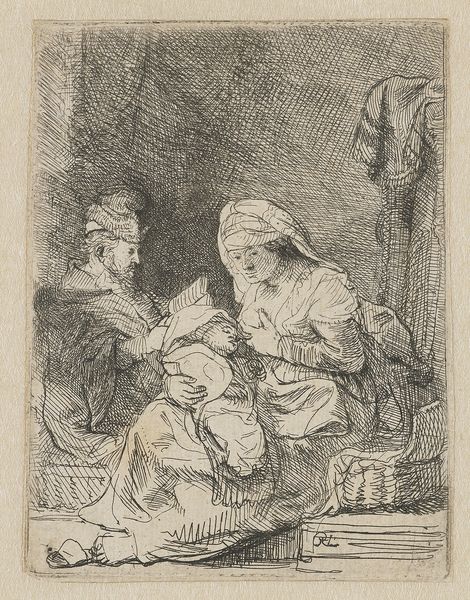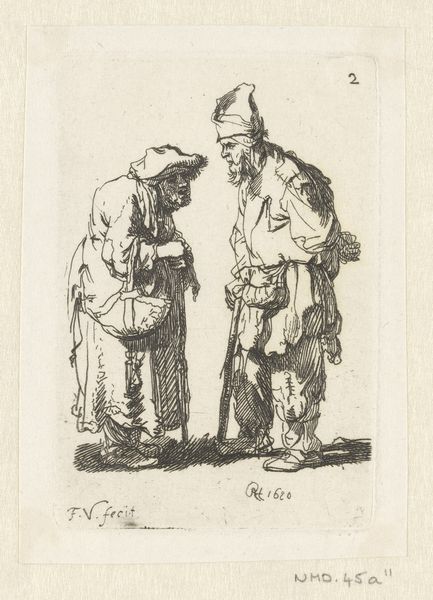
drawing, paper, ink
#
portrait
#
drawing
#
dutch-golden-age
#
paper
#
ink
#
genre-painting
Dimensions: height 210 mm, width 196 mm
Copyright: Rijks Museum: Open Domain
Curator: Before us is “Three Orientals,” a drawing in ink on paper created by Gerbrand van den Eeckhout, sometime between 1631 and 1674. It is currently housed here at the Rijksmuseum. Editor: My immediate reaction is to the striking ochre tones. The limited palette really draws attention to the artist's masterful use of line and shadow. There's a sense of understated melancholy about the figure on the left, as well. Curator: Eeckhout created this image during a time when the Dutch were expanding their trade routes and their perceptions of the world. It raises questions about orientalism and how other cultures were perceived and represented. Considering contemporary conversations around representation and cultural appropriation, the image certainly has an evocative quality, wouldn't you agree? Editor: Yes, that may be one reading of it, certainly. But, for me, what is most apparent is the geometry of the scene; consider how the soft curves of their turbans juxtapose with the more severe vertical lines of their robes. Note how Eeckhout also plays with light, creating a kind of chiaroscuro effect, emphasizing the faces and gestures. It feels almost sculptural. Curator: Interesting. When I consider their attire, particularly the turbans, I'm prompted to reflect on the historical context of Dutch-Ottoman relations during the 17th century. Trade, diplomacy, even conflict – this image exists within those power dynamics. Are we viewing an objective portrait or a constructed narrative influenced by Western biases? And further more, could we say that this is less about the subject and more about the author? Editor: Of course, such themes cannot be ignored. However, these men stand before us, captured with a fluid hand. Their characters appear distinct, despite the commonality of dress, which allows each figure their unique stance in space and mind. They have presence, because Eeckhout brings his composition to life! Curator: It's a potent reminder that images never exist in a vacuum; their meanings are shaped by historical forces. Editor: Indeed. Eeckhout leaves much open to interpretation. A subtle scene where meaning is created through suggestion as much as it is from meticulous artistry.
Comments
No comments
Be the first to comment and join the conversation on the ultimate creative platform.

